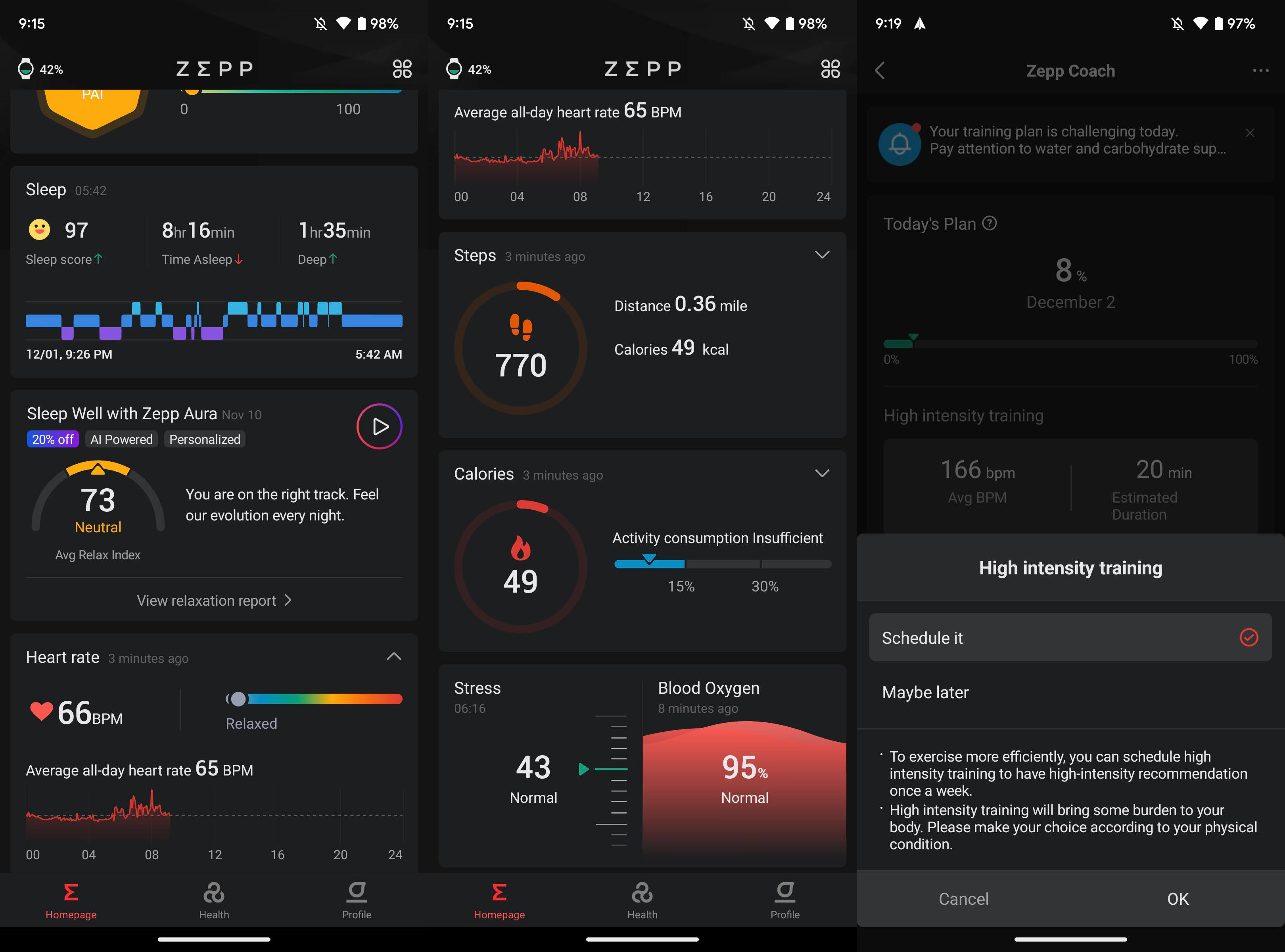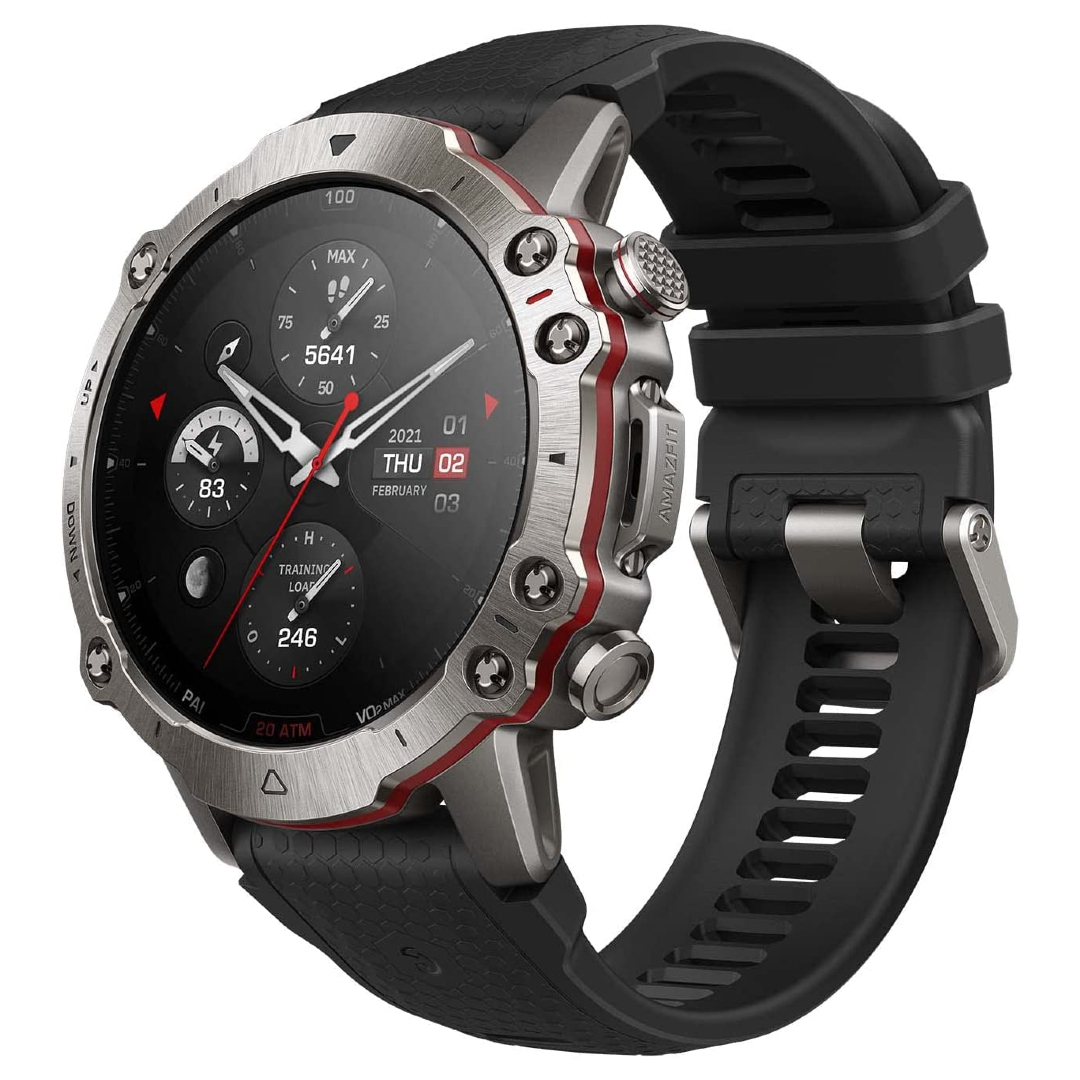Amazfit Falcon hands-on: The titanium-clad smartwatch is ready for a premium battle
Amazfit has gone premium for its latest smartwatch, and it is NICE.

With so many smartwatches on the market to pick from these days, many of them tend to blur together. But a common feature that has been around since wearables gained popularity was the fact that many of them are made of plastic and aluminum if you get any metal at all. It isn't necessarily bad — if nothing else, it definitely reduces costs. But when looking for a more premium feeling and looking watch, the options are limited — and expensive. The new Amazfit Falcon aims to fill the gap between high cost and availability. I've spent the past month using the new smartwatch and am ready to give some thoughts on this titanium-encrusted wearable.
Amazfit Falcon hands-on:

I've had the opportunity to test and review several different Amazfit devices over the years, most recently the T-Rex 2 and the GTS 4. The company has made significant strides in the last year with its custom operating system Zepp OS. Many of the issues I had with it during my time using the Amazfi T-Rex Pro in 2021 have been resolved. As for the new Falcon, it adopts nearly all of the features introduced on the T-Rex 2, adds some new ones, and wraps them all up in a durable titanium case.
That casing is slightly larger than its prehistorically-named sibling but surprisingly lighter by a couple of grams. But because they share the same size battery and the more dense titanium led, the weight difference caught me off guard. As for the display, you get a vivid and crisp 1.28-inch AMOLED screen protected by sapphire crystal. Which happens to be .11 inches smaller than the T-Rex 2.
While the display on the Falcon looks great, it's bright, responsive, and colorful, but Amazfit put a nearly 2mm bezel around it. The bezel on the Pixel Watch has had a fair amount of debate regarding its size, but because the glass covering its screen curves, the border is less noticeable than on the Falcon's flat crystal cover. It isn't a deal breaker for me. But it is noticeable, and I wish it were more like the T-Rex 2's much thinner bezel.
| Header Cell - Column 0 | Amazfit Falcon |
|---|---|
| Dimensions | 49.45 x 47.2 x 12.95 mm |
| Weight | 64 grams |
| Display | 1.28 inches AMOLED, 416 x 416 326 ppi, 1,000nit, Sapphire crystal glass touchscreen |
| Colors | Silver Titanium |
| Operating System | Zepp OS 3.0 (RTOS) |
| Buttons | 4 |
| Strap | 22 mm, Liquid Silicone, quick release |
| Battery | 500mAh, 21 hours - 14 days |
| Connectivity | WLAN 2.4GHz, Bluetooth 5.0 BLE |
| Sensors | BioTracker 3.0 PPG biometric sensor, acceleration, gyroscope, geomagnetic, barometric, ambient light |
| Health tracking | SpO2, heart rate, stress |
| Trackable sport modes | 150+ |
| Water Resistance | 20 ATM (200 meters, scuba diving, surface swimming, and snorkeling) |
| Durability | 15 MIL-STD-810G certifications |
| Location | Dual-band & 6 satellite positioning systems |
When wearing the Amazfit Falcon, it feels very solid and durable. There's no rattling of any buttons or components. Pressing any of the four physical buttons results in a confident, silent click. Much like with previous T-Rex watches, you can navigate the entire UI using only the buttons. The only noise that comes from the wearable if you wiggle your wrist is from the watch strap.
Amazfit includes what it calls a Liquid Silicone band. As far as pre-installed rubbery watch straps go, it's pretty nice. It has a nice stretch and is flexible so that it wraps around the wrist comfortably. What is different about this 22mm strap compared to the T-Rex 2 is that it is easily replaceable. The strap's method of connecting to the watch is with spring-loaded quick clasps that grab onto the universal spring bars. So to be clear, it's the quick clasps on the strap that rattle, not the watch.

As for the software, as I mentioned before, it runs a custom operating system called Zepp OS 3.0. Overall, it is the same as on the T-Rex 2. Navigating through the different screens is snappy, and many of the apps offer a good amount of info directly on the watch, with more available in the companion app on your phone.
Be an expert in 5 minutes
Get the latest news from Android Central, your trusted companion in the world of Android
I really like this version of Zepp OS compared to prior versions. It feels much more complete and has familiar mechanics that I enjoy on many of the other top Android smartwatches. Notifications aren't quite as good as on Wear OS, but at least you can now reply to messages with a quick reply or emoji.
A big part of what the smartwatch, and many other excellent Amazfit wearables, touts are the health and fitness features — and the Falcon boasts a lot of them. When we compared the Amazfit T-Rex 2 and the Samsung Galaxy Watch 5 Pro, there weren't as many differences as one might think. The largest being access to Google Plays and the price, and at $500, the Amazfit Falcon could have a tougher battle.

BioTracker 3.0 PPG biometric sensor is at the heart of the Amazfit Falcon and is what is used to gather loads of health metrics for the software to help you not only gain a better understanding of your body but also to improve your fitness goals.
The Amazfit Falcon can track over 150 different workouts and even has a new built-in AI coach called Zepp Coach. Users are supposed to enter their goals along with other basic health info from the Zepp app like weight, height, etc, and the Zepp Coach is supposed to help create training plans and provide insight into workouts.
In my testing I found the Coach to be vaguely helpful. It does provide insight into workouts and different training plans. I can definitely see how it could be beneficial to those who aren't 100% confident in coming up with and managing fitness plans on their own. But aside from the coach, the Zepp app does a great job of providing detailed info on everything from blood oxygen levels to sleep and workout analysis to step history.

Something else that has long been a favorite feature of mine when using Amazfit watches is the battery life. Aside from the TicWatch Pro 3 Ultra, very few other smartwatches can consistently provide multi-day battery life in normal usage. Amazfit rates the Falcon for 14 days of normal usage per charge with seven days of heavy usage. I would say that's about right for my testing. Though curiously, the watch gets considerably less use per charge than the T-Rex 2, which is rated for 24 days of normal use.
Another change the Falcon brings is in the charging method. The Falcon uses a proprietary cable end that plugs directly into the watch. For all of the Amazfit watches I've tested before, they all used a magnetic cradle-type connector with POGO pins for charging. While it would be nice for a more standardized charging method to propagate wearables, I do prefer Falcon's approach because it isn't going to come loose as the magnetic style could.
Amazfit Falcon hands-on: Is it for you?
So, who's the Amazfit Falcon for? Well, at $500, I wouldn't say everyone. Outside of the cost, the watch is a very capable daily smartwatch. The highly accurate GPS, a multitude of health data, and extreme durability mean the wearable is an excellent health and fitness companion.
It's unclear if the Zepp Coach will show up on previously released Amazfit watches, but nearly every other feature of the Falcon is available on the T-Rex 2 if the price tag is an issue. But it's hard to deny the premium look and feel of the titanium casing used on the Falcon. If you need a watch that is durable, looks fantastic, and not only tracks but coaches you on your health and fitness journey, then the Amazfit Falcon is for you.

The Amazfit Falcon is a titanium-clad smartwatch that brings a premium look and feel to everyday use but that's about more than just appearance. It's very durable, loaded with health and fitness features, and offers fantastic battery life.
For
- Fantastic build quality
- Smooth and feature-rich software
- Excellent health and fitness features
- Great battery life
Against
- The bezel around the display is large
- Expensive
- No Google services

